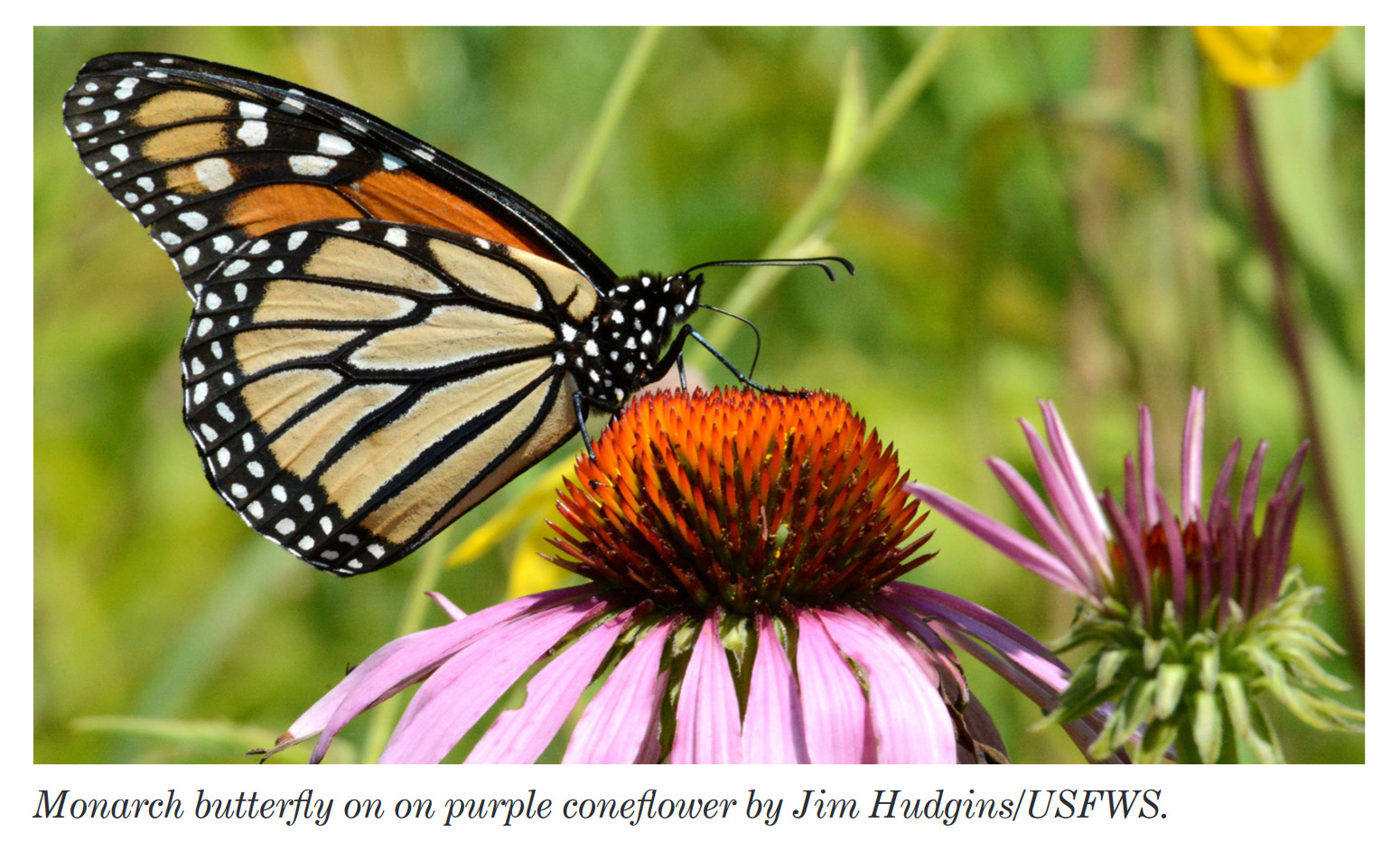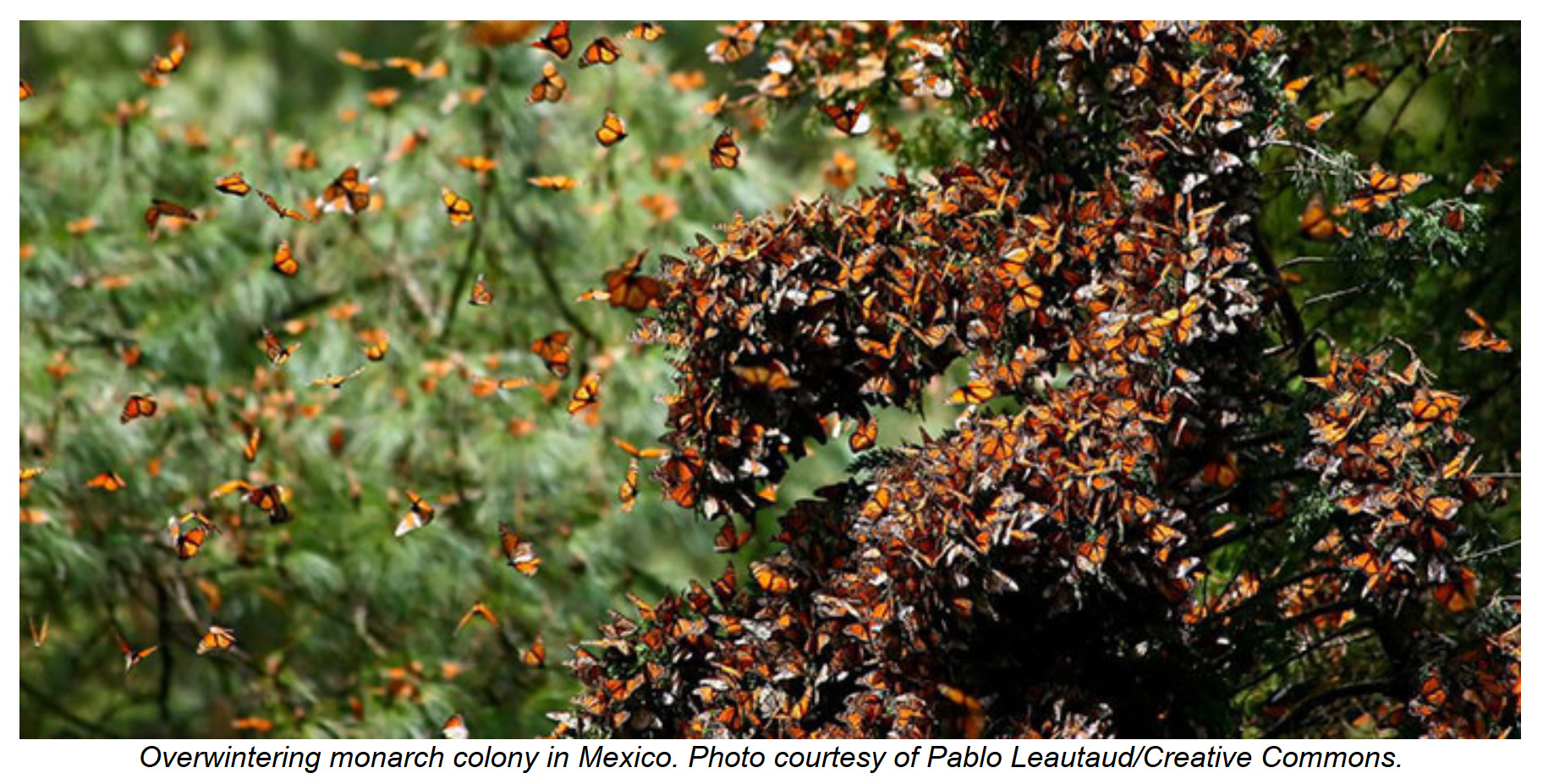More on saving the monarch butterfly
Both federal and state action are needed, and it will take more than milkweed planting

Eric posted an excellent analysis last month of the desirability of protecting the monarch butterfly under California’s Endangered Species Act (CESA). I wanted to add a brief coda (as well as a couple of pictures) to his post, to emphasize the need for federal as well as state action, and to expand on the steps that might be needed to bring these beautiful butterflies back.
As Eric points out, the monarch has experienced a precipitous recent decline in California. Moreover, the fate of the monarch is personal to many Californians, me included. The spectacle of trees full of the wintering butterflies in places like Pacific Grove is one not to be missed. It’s horrifying that the monarch count at Pacific Grove has gone from more than 24000 in a single day in the winter of 2014-15 to only 740 on a day during the peak of the season in 2018. Without a doubt California needs to take steps to help save the monarch, and Eric’s suggestion that the species’ dire status could help prod the state to explicitly expand CESA to cover insects is a good one.

That won’t, however, be enough. The monarch also needs, and warrants, national protection. Its decline is not limited to California. In Florida, for example, monarch populations are down 80% since 2005. The Eastern monarch population as a whole is down nearly 15% in just the last year. According to a petition filed in 2014 by the Center for Biological Diversity and other environmental groups, “Overall the North American monarch population has declined by more than 90 percent in the past two decades based on comparisons of the most recent population size estimates to the 20-year average.”
Eric is right that the current federal administration is not exactly aggressively listing species — only 17 species have been added to the list since Trump’s inauguration. Luckily, however (as I know Eric is well aware), it is not entirely up to them. The federal ESA requires that species, including insects, be listed if they are qualify as endangered (“in danger of extinction”) or threatened (“likely to become an endangered species within the foreseeable future”). And it requires that those determinations be made “solely on the basis of the best scientific and commercial data available.” FWS has dragged its heels on the monarch, even before the new administration was in place — it found in December 2014, in response to the petition, that a full status review was necessary. That review should have been finished, and should have produced a decision on whether listing was or was not warranted, by December 2015. That didn’t happen, Center for Biological Diversity sued, and FWS agreed to make a listing decision by July 2019. The agency does not appear to be on track to meet that deadline — it has yet to release a draft status assessment, although it was supposed to have that draft peer reviewed in June 2018. But the Center for Biological Diversity continues to track progress, and will no doubt be ready with another lawsuit if needed. It’s hard to imagine a decision not to list withstanding judicial review, given the latest population numbers, unless FWS can make a convincing case that other conservation efforts are sufficient to protect the species.
That may be a difficult showing. Pesticide use, loss of the milkweed on which their caterpillars depend, well-meaning efforts to plant tropical milkweed that may have discouraged migration, and destruction of wintering habitat are all serious problems for the monarch butterfly, and all are difficult to solve over the long term.
Now there’s even another threat to throw in the mix — a new study (subscription required; or try this description of the study) shows that road kill of butterflies is a significant problem, at least in the west Texas to Mexico migration corridor. Not as serious a problem as loss of milkweed or wintering habitat, but nonetheless potentially enough to push an already stressed species over the bend. This one, however, may be more susceptible to solutions, if we are willing to see them. Apparently nets have successfully directed butterflies above roadways in Taiwan, although road closures during peak migration may also be necessary.
As in many other cases, there is no way to solve the monarch crisis without people accepting some restrictions on their activities, even on activities that, viewed in isolation, seem harmless. In California, and in North America more generally, we should be willing to make the small sacrifices that survival of these beautiful and unique creatures require. Look again at the pictures in this post. Don’t you agree that slightly increased transportation times and costs, as well as efforts to restore native vegetation, are justified to protect this phenomenon?
Reader Comments
3 Replies to “More on saving the monarch butterfly”
Comments are closed.






Thank you, Professor Doremus.
When I returned to Ventura from Carmel five years ago, I moved into the suburbs of east Ventura. Then I was fortunate to find a 100 year old place with fruit trees and lots of milkweed. Most of my neighbors have drought tolerant landscaping and very old trees. And milkweed. Monarchs abound!
Thanks for sharing your experience, Jean. Glad to hear that you’ve got abundant monarchs!
Kudos to Eric and Holly for drawing attention to the plight of the Monarch. My kids used to love collecting chrysalis from our “milkweed-infested” meadow in Vermont to watch one of nature’s most spectacular reality shows. Let your inner kid enjoy this little clip: https://www.youtube.com/watch?v=mjADshD3msk